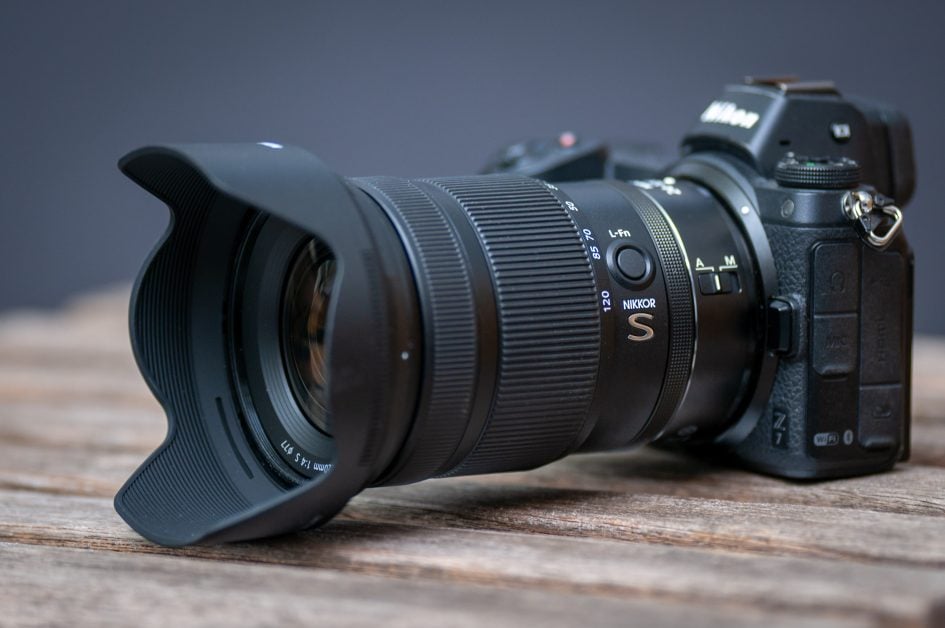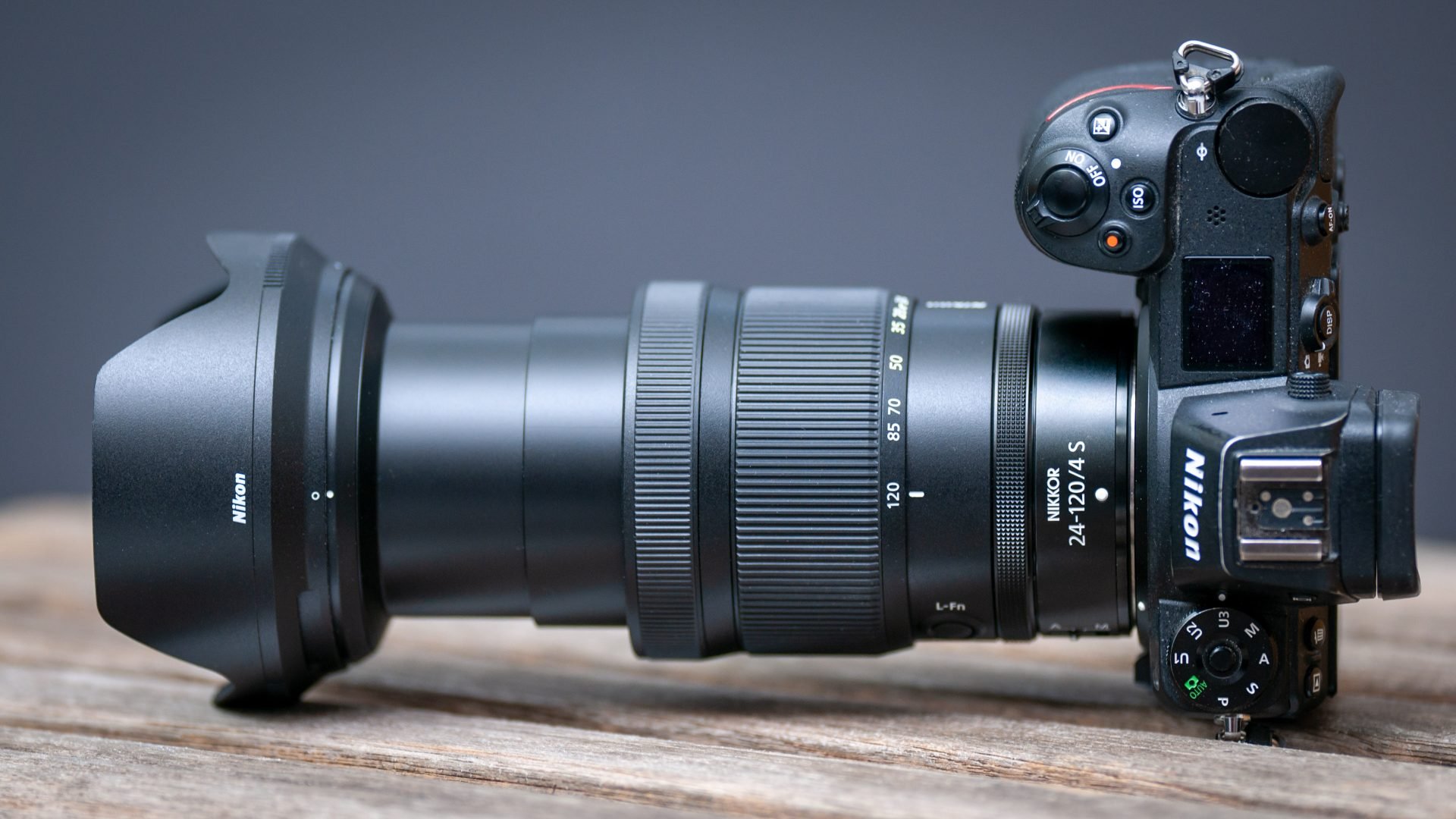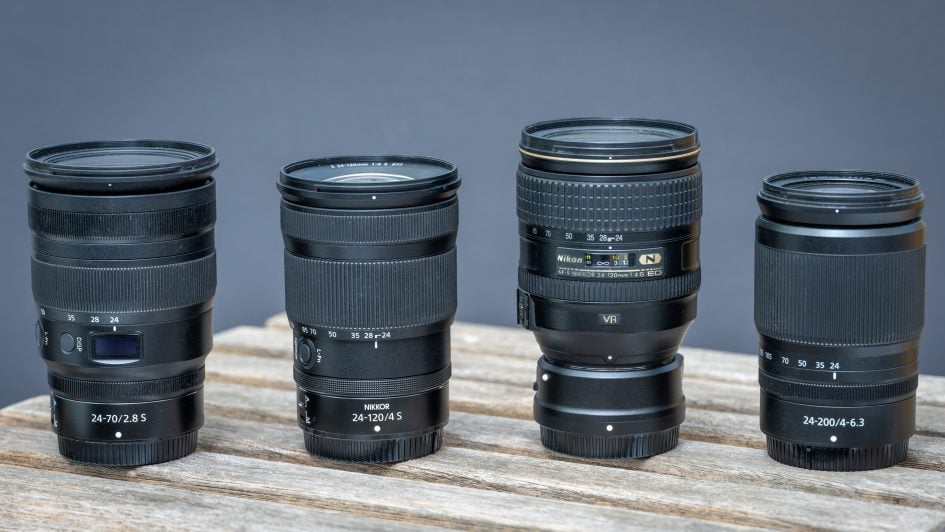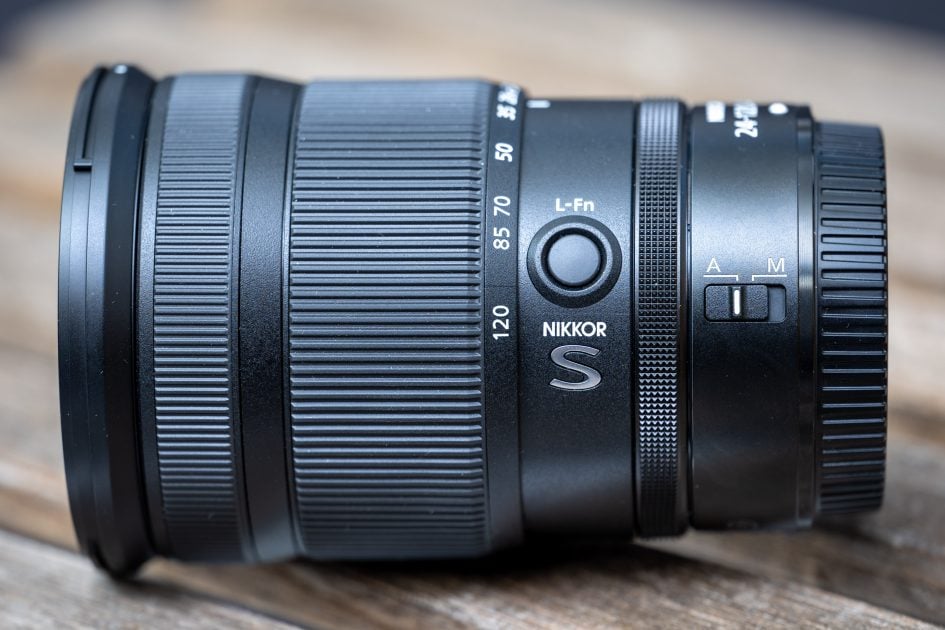Nikon Z 24-120mm f4 S review
-
-
Written by Thomas
Intro
The Nikon Z 24-120mm f4 S is a 5x zoom covering a wide-angle to moderate telephoto range. It is corrected for full-frame cameras but can also be used on a cropped body like the Z fc or Z 50 where it covers a field of view equivalent to 36-180mm focal length. It is the successor to Nikon’s AF-S 24-120mm f4G VR which was introduced in 2010 and still can be used via the FTZ adapter on Nikon’s Z cameras. The new lens has a dedicated focus ring, an extra function button and is a member of Nikon’s “S-Line” class of lenses which implies very good optical performance. Nikon also claims that the lens has minimal focus breathing or focus shift which bodes well for shooting video. The lens is fully sealed against the elements and also has Nikon’s best coating against flare and glare but it misses optical image stabilization. So it relies solely on the body-based stabilization on Nikon’s full-frame Z cameras – which you’ll sorely miss on a Nikon Z fc or Z 50 camera.
The Nikon Z 24-120mm f4 S is made in Thailand and costs 1249 EUR / 1097 USD / 1099 GBP.
Facts and features
Let’s compare the Nikon Z 24-120mm f4 S (“Z 24-120” for short) to the Nikon AF-S 24-120mm f4G VR (“F-Nikkor”) and the Nikon Z 24-200mm f4-6.3 VR (“Z 24-200”). As usual I’ve rated the features with a [+] (or [++]), when it’s better than average or even state of the art, a [0] if it’s standard or just average, and [-] if there’s a disadvantage.
Size (diameter x length): 84 x 118mm (3.3 x 4.6in.). Add 43mm for the lens hood (104mm diameter) and 55mm when zoomed in to 120mm focal length. Nikon implemented a double barrel design to do this just like on the Z 24-200. The F-Nikkor is 84 x 104mm + 42mm lens hood (113mm diameter) + 44mm extension when zoom-in. Add 30mm for the FTZ adapter to use it on a Nikon Z camera. The Z 24-200 is 77 x 114mm + 38mm lens hood + 63mm when zoomed in. [0]
Weight: 630g (2.99 lb.). Add 27g for the plastic lens hood. The F-Nikkor is 710g + 31g lens hood. Add another 133g for the FTZ adapter to use it on a Nikon Z camera. The Z 24-200 is 565g + 22g lens hood. [0]
Optics: 16 elements in 13 groups including 7 special dispersion and/or aspherical elements. The lens has “ARNEO” anti-reflective coating in addition to Nikon’s Nano-coating to reduce flare, glare and ghosting plus fluorine-coating on the front element to repel water, dust, and dirt and make cleaning easier. The F-Nikkor has 17 elements in 13 groups including three elements. The Z 24-200 has 19 elements in 15 groups including three aspherical elements. [+]
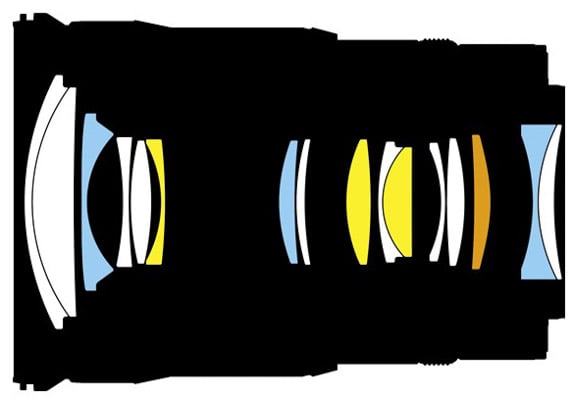
Focal ratio: The Z 24-120 has a constant focal ratio of f4.0 over its entire zoom range just like the F-Nikkor. The Z 24-200mm also starts at f4.0 on the short end but achieves its slowest focal ratio of f6.3 already at 80mm focal length. That is 1.3 stops slower than the Z 24-120. [0]
Coverage: the 5x zoom-range of the Z 24-120 is the same as from the F-Nikkor and gives you 71% more reach over a standard 24-70mm zoom lens. But it is topped by the 8.3x zoom range of the Z 24-200 which has again another 67% more reach. [0]
Closest focus distance is 0.35m (1.2ft.) with a working distance of 0.16m (6.3in.) at 120mm focal length and a maximum magnification of 1:2.4 which is very good. The F-Nikkor goes to 1:3.6 at 0.4m working distance, the Z 24-200 achieves 1:3.4 at 0.49m working distance. The Z 24-120 reaches a magnification of 1:10 at 1.28m object distance (and 120mm focal length). [+]
Image stabilization: No. The Z 24-120 relies solely on the body-based stabilization on Nikon’s full-frame Z cameras. The F-Nikkor and the Z 24-200 offer optical stabilization (VR) which works in conjunction with the Z full-frame cameras to achieve stabilization over 5 axes for the Z 24-120 and 3 axes for the F-Nikkor. [0]
Filter-thread: The Z24-120 and F-Nikkor use 77mm filters. The Z 24-200 only needs 67mm filters [+]
Autofocus: Yes with built-in AF drive. Manual-focus override is by simply turning the dedicated focus ring at the front of the lens. The ring has a variable gearing (like Nikon’s other AF Z-Nikkors) which allows for very precise manual focus when turned slowly but cannot be switched to linear gearing. Which makes smooth focus pulling for videographers almost impossible. On Nikon Z cameras introduced October 2020 or later you can reverse focus direction. Focus on the F-Nikkor works differently as it has a direct linear mechanical coupling between the focus ring and the focus action. And it also has a display showing focusing distance in meter an feet. [+]
Aperture ring and other control elements: the multi-function control ring of the Z 24-120 can be assigned to operate the aperture (which is the default), exposure compensation, or ISO sensitivity – or simply switched off. The Z 24-200mm lacks the dedicated focus ring so the multi-function ring also controls focus when the camera is set to MF. The F-Nikkor has no aperture ring. Both the Z 24-120 and the F-Nikkor have an AF/MF switch – which the Z 24-200 lacks. And the Z 24-120 is the only lens in this comparison which has an extra function button which can be assigned different functions e.g. AE/AF-lock. [+]
Lens profile: The Z-Nikkors come with a lens profile which can be controlled from the camera. Vignette control offers the usual options of High, Normal, Low and Off. Diffraction compensation can be activated or deactivated but Auto distortion control is always On (same for the Z 24-200). The F-Nikkor has a lens profile in Adobe’s RAW converter. [+]
All three lenses cover full frame/FX or smaller sensors. [+]
Price: 1249 EUR (incl. 19% VAT) / 1097 USD / 1099 GBP. The Nikon AF-S 24-120mm f4G VR is currently at 850 EUR / 1097 USD / 1079 GBP, the Nikon Z 24-200mm f2.8 VR S costs 930 EUR / 897 USD / 830 GBP. The price of the Z 24-120 in EUR seems a bit too high – especially compared to the price in USD or the Z 24-200. [0]
Both Z-Nikkors come with the usual flimsy pouch with no strings to pull it close. The lens hood is included and is reversible for transport. The F-Nikkor comes with a soft pouch and reversible lens hood. [0]
Sealing: yes. All three lenses have a rubber grommet at the lens-mount. And the Z-Nikkors have further special weather-sealing throughout the construction. [+]
At a score of 0[-]/7[0]/8[+] the Nikon Z 24-120mm f4 S offers a well balanced feature set including full weather sealing, fluorine-coating, ARNEO plus Nano anti-reflex coating, separate focus ring plus multi function ring. But the lens is neither very small or light and misses optical image stabilization – which is a critical omission especially when you use the lens on a DX-body without sensor-based IS. It’s main differentiator versus the Nikon Z 24-200mm f4-6.3 is its constant f4 focal ratio. But then its focal length stops at 120mm vs the 200mm of the super-zoom, which gives you 67% more reach.
Check prices on the Nikon Z 24-120mm f4 S at B&H, Adorama, WEX UK or Calumet.de. Alternatively get yourself a copy of my In Camera book or treat me to a coffee! Thanks!Above from left to right: Nikon Z 24-70mm f2.8 S, Z 24-120mm f4 S, AF-S 24-120mm f4G VR on FTZ adapter, Z 24-200mm f4-6.3 VR
Coverage
The 5x zoom range of Nikon’s Z 24-120mm f4 S fits nicely between the 2.8x coverage of their 24-70mm zoom lenses and the 8.3x zoom of the Nikon Z 24-200mm f4-6.3 VR. On the long end the Z 24-120 has an angle of view of 20.5 degrees, compared to 34.4 degrees of a Z 24-70 or 12.4 degrees of the Z 24-200.
Here is the angle of view of the different lenses (Auto distortion control activated):
Above: Nikon Z 24-120mm f4 S coverage on a full-frame camera at 24mm (left) and 120mm (right)
Above: Nikon AF-S 24-120mm f4G VR coverage on a full-frame camera at 24mm (left) and 120mm (right)
Above: Nikon Z 24-70mm f2.8 S coverage on a full-frame camera at 24mm (left) and 70mm (right)
Above: Nikon Z 24-200mm f4-6.3 VR coverage on a full-frame camera at 24mm (left) and 200mm (right)
The differences at the long end of 70mm, 120mm, or 200mm are huge and could be the decisive factor for choosing one of these zoom lenses. Cropping a 70mm shot down to achieve the angle of view of 120mm would throw away 66% of the pixels, reducing a 45MP shot to a mere 15MP. A similar reduction happens when cropping a 120mm shot down to the angle of view of 200mm.
Focus and zoom
Focus accuracy and repeatability is critical to consistently produce sharp shots. Repeatability (the accuracy of focus on the same subject after repeated focus-acquisition) of the Nikon Z 24-120mm f4 S is very good (measured 98.8% in Reikan FoCal) with no outliers over a series of 40 shots. The lens focuses in around 0.35 sec from infinity at 120mm focal length to 1.28m (1:10 magnification), which is very fast.
The zoom ring has a pretty short throw of 80 degrees and has a 30mm wide rubber surface with a good grip. It turns with quite some resistance and cannot be operated with one finger. The lens shows a bit of zoom creep. The focus ring is 12mm wide and is located at the front of the lens. It also has a rubberized surface, moves smoothly, and can easily be operated even with your pinky.
AF-operation of the lens in photo-mode produces a very low buzz – a bit of which can also be heard if you record video with the built-in microphone.
As you pull focus, you’ll notice a little focus breathing: the image became 3% less magnified when I adjusted focus from infinity to 1.28m at 120mm focal length. This is hardly visible and much better than the -12% of the F-Nikkor.
I also tested whether Nikon’s zoom lens allows you to change the focal length without altering its focus. This characteristic is called parfocal. I focused the lens at 120mm and then slowly zoomed back checking focus on the way. The Z 24-120mm f4.0 S did not keep its focus well enough. So it’s mandatory to re-focus after changing the focal length – or use continuous AF. That’s the same as with the F-Nikkor.
Image stabilization
To test the effectiveness of the image stabilization with the Nikon Z 24-120mm f4 S on a Nikon Z7 camera body, I did a series of 140 test-shots hand-held at 120mm focal length with shutter speeds from 1/125 of a second down to 1/4 sec. I used the shots at 1/125 sec with VR=off as reference of how good my hand-holding was at the time of the test and Reikan FoCal did the chore of evaluating the sharpness of all shots.
Here’s the results: With VR=on images down to 1/30 sec (2 stops) were clearly sharper than the average sharpness at 1/120 sec with VR=off – except for one outlier in 20 shots. At 1/15 sec (3 stops) I had 20% outliers. Interestingly I had no outliers over 20 shots at 1/8 sec (4 stops) although 5 images (25%) showed a little softness. But at 1/4 sec (5 stops) results become very erratic with only 30% usable images. This is an advantage from the VR image stabilization in the camera of 4 stops.
Next check out my quality results!
Check prices on the Nikon Z 24-120mm f4 S at B&H, Adorama, WEX UK or Calumet.de. Alternatively get yourself a copy of my In Camera book or treat me to a coffee! Thanks!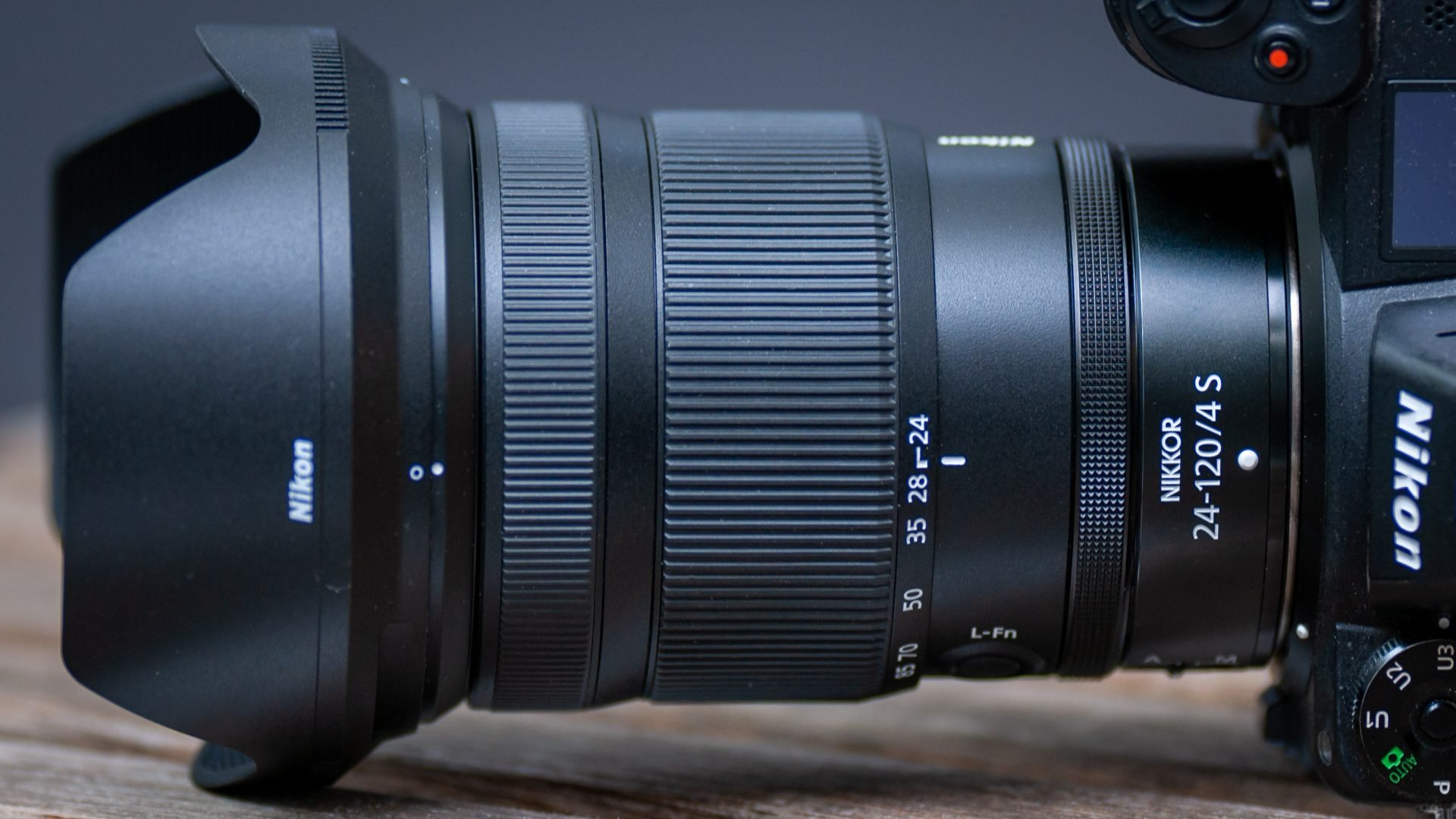
 Nikon's Z 24-120mm f4 S is a worthy and well featured successor to the venerable AF-S 24-120mm f4G VR which the new lens surpasses in every aspect. It produces very sharp images with almost no field-curvature or colour aberrations and can confidently be used wide open and in challenging contra-light situations. Its Bokeh is relatively nice for a focal ratio of f4.0 and the vibration reduction of the camera provides a respectable 4 stops of stabilization. So the Z 24-120mm f4 S is the perfect choice for those wanting more reach than the standard 24-70mm lens and value a constant f4.0 focal ratio. Highly Recommended.
Nikon's Z 24-120mm f4 S is a worthy and well featured successor to the venerable AF-S 24-120mm f4G VR which the new lens surpasses in every aspect. It produces very sharp images with almost no field-curvature or colour aberrations and can confidently be used wide open and in challenging contra-light situations. Its Bokeh is relatively nice for a focal ratio of f4.0 and the vibration reduction of the camera provides a respectable 4 stops of stabilization. So the Z 24-120mm f4 S is the perfect choice for those wanting more reach than the standard 24-70mm lens and value a constant f4.0 focal ratio. Highly Recommended.